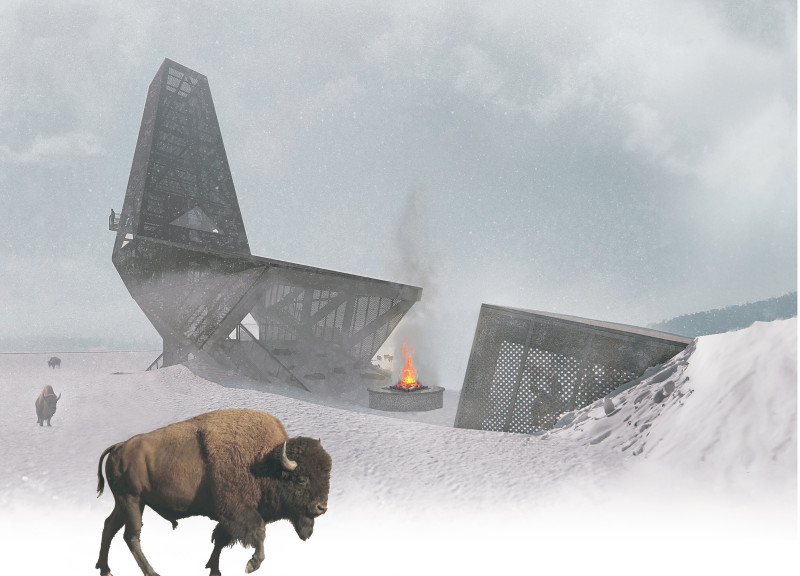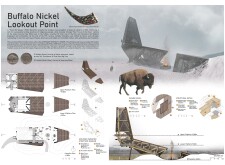5 key facts about this project
**Project Overview**
The Buffalo Nickel Lookout Point is an architectural installation situated in South Dakota, designed to reflect the relationship between Native Americans and the bison. Intended as both a functional structure and a site for contemplation, it serves as a connection point to nature and historical narratives. The design draws inspiration from the text "Black Elk Speaks," integrating themes of remembrance and reconciliation in a landscape that conveys both loss and potential for future coexistence.
**Architectural Form**
The structure's form is inspired by the silhouette of a stylized bison horn, resulting in a dynamic geometry that emphasizes movement and flight. This aesthetic choice not only creates visual interest but also serves practical functions such as shelter and observation. The lookout point is organized across multiple levels: the upper platform (+15.00m) offers panoramic views for quiet reflection; the lower platform (+9.00m) facilitates access to communal areas; and the campfire area (+3.50m) fosters social interaction through storytelling and gathering.
**Materiality and Structural Integrity**
Material choice plays a critical role in the identity of the installation. The façade features 5-inch thick weathering steel panels, symbolizing resilience and connecting to the historical narrative of Indigenous displacement. Structural stability is ensured through a galvanized steel truss system, which also contributes to an industrial aesthetic reflective of American expansion. The use of isolated fasteners and concealed connections maintains visual cohesion while supporting the timber-structured truss system, which adds a natural warmth to the experience. Accessible features, including an elevator, are integrated to promote inclusivity, reinforcing the community-oriented focus of the design.



















































